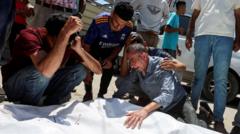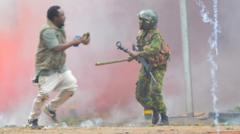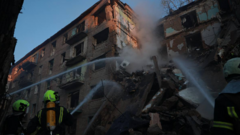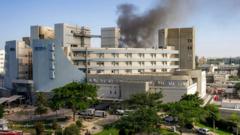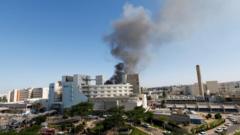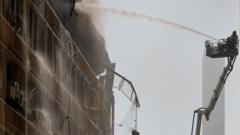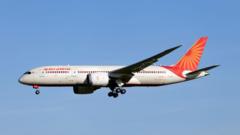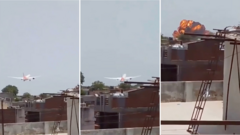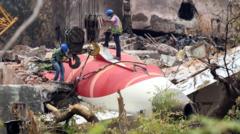**Delta Flight 4819 from Minneapolis experienced a dramatic crash landing at Toronto’s Pearson Airport, resulting in injuries but no fatalities among its 80 passengers and crew.**
**All Passengers Survive Toronto Plane Crash: A Close Call for Delta Flight 4819**

**All Passengers Survive Toronto Plane Crash: A Close Call for Delta Flight 4819**
**An in-depth look at the harrowing crash landing of Delta Flight 4819 at Toronto Pearson International Airport, where quick actions prevented tragedy.**
Delta Flight 4819 experienced a dramatic landing mishap at Toronto Pearson International Airport during adverse weather conditions, resulting in the plane overturning and catching fire. Fortunately, all 80 individuals onboard managed to escape, albeit with at least 18 sustaining injuries, two of whom were reported to be in critical but stable condition.
The chaotic scene unfolded on February 17th, 2025, when the Bombardier CRJ900, operated by Delta's Endeavor Air, touched down on the runway at approximately 2:15 PM amid heavy winds and snow. Eyewitness accounts describe the terrifying moment when the aircraft skidded across the tarmac, sparked with flames, and abruptly flipped onto its back.
“I could feel the plane lift, and then it was like a roller coaster,” recounted passenger Pete Carlson. Compounded by wind gusts reaching 40 miles per hour, the situation rapidly escalated, sending passengers into a panic as the aircraft became engulfed in flames and fuel began to seep downward towards their seats.
Despite the alarming turn of events, the emergency response onboard proved effective. Flight attendants and passengers worked together to evacuate the aircraft using the emergency exits. By late evening, most passengers had been treated at local hospitals and released, highlighting the swift and commendable efforts of emergency responders both onboard and at the airport.
This crash landing distinctly contrasts recent aviation accidents that have resulted in tragic outcomes, underscoring the importance of cooperative efforts in emergency situations. Delta Airlines has expressed its support for the impacted individuals and has commenced an investigation into the causes of the incident.
As aviation experts analyze the event, they emphasize the need for continued improvements in aircraft safety and emergency protocols, particularly under deteriorating weather conditions. This incident serves as a reminder of both the unpredictability of air travel and the resilience of those who contribute to passenger safety, both in the air and on the ground.
The chaotic scene unfolded on February 17th, 2025, when the Bombardier CRJ900, operated by Delta's Endeavor Air, touched down on the runway at approximately 2:15 PM amid heavy winds and snow. Eyewitness accounts describe the terrifying moment when the aircraft skidded across the tarmac, sparked with flames, and abruptly flipped onto its back.
“I could feel the plane lift, and then it was like a roller coaster,” recounted passenger Pete Carlson. Compounded by wind gusts reaching 40 miles per hour, the situation rapidly escalated, sending passengers into a panic as the aircraft became engulfed in flames and fuel began to seep downward towards their seats.
Despite the alarming turn of events, the emergency response onboard proved effective. Flight attendants and passengers worked together to evacuate the aircraft using the emergency exits. By late evening, most passengers had been treated at local hospitals and released, highlighting the swift and commendable efforts of emergency responders both onboard and at the airport.
This crash landing distinctly contrasts recent aviation accidents that have resulted in tragic outcomes, underscoring the importance of cooperative efforts in emergency situations. Delta Airlines has expressed its support for the impacted individuals and has commenced an investigation into the causes of the incident.
As aviation experts analyze the event, they emphasize the need for continued improvements in aircraft safety and emergency protocols, particularly under deteriorating weather conditions. This incident serves as a reminder of both the unpredictability of air travel and the resilience of those who contribute to passenger safety, both in the air and on the ground.

